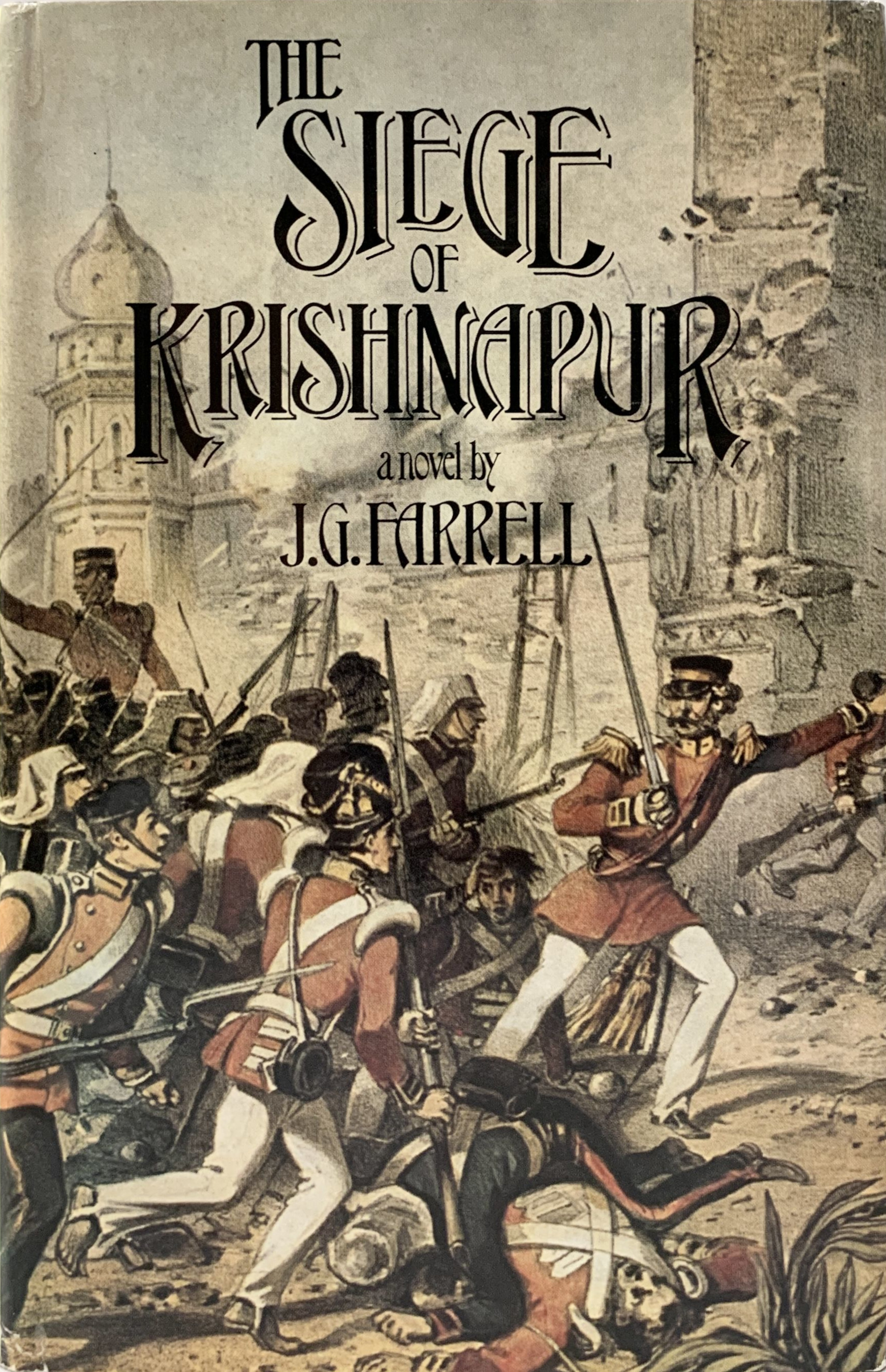Hardcover, 344 pages
English language
Published Jan. 8, 1973 by Weidenfeld & Nicolson.

Hardcover, 344 pages
English language
Published Jan. 8, 1973 by Weidenfeld & Nicolson.
In the Spring of 1857, with India on the brink of a violent and bloody mutiny, Krishnapur was a remote town on the vast plain that stretches across Northern India. For the British at Krishnapur life was orderly and genteel, sometimes lavish and sometimes frivolous, with little else but gossip to counter the heat and the boredom. Elsewhere in Hindustan it was said that the Sepoys were refusing to load their new Enfield rifles with cartridges supposedly greased with fat from cows and pigs and were about to rise against their officers. But at Krishnapur other topics dominate the conversation . . . the races at Calcutta, the latest news from England, even poetry and 'Progress'. Only Mr. Hopkins, the Collector, senses danger while the other Europeans continue to abuse their servants, to trade and profit, and to declare the benefits of their civilisation upon India.
Then the Sepoys at …
In the Spring of 1857, with India on the brink of a violent and bloody mutiny, Krishnapur was a remote town on the vast plain that stretches across Northern India. For the British at Krishnapur life was orderly and genteel, sometimes lavish and sometimes frivolous, with little else but gossip to counter the heat and the boredom. Elsewhere in Hindustan it was said that the Sepoys were refusing to load their new Enfield rifles with cartridges supposedly greased with fat from cows and pigs and were about to rise against their officers. But at Krishnapur other topics dominate the conversation . . . the races at Calcutta, the latest news from England, even poetry and 'Progress'. Only Mr. Hopkins, the Collector, senses danger while the other Europeans continue to abuse their servants, to trade and profit, and to declare the benefits of their civilisation upon India.
Then the Sepoys at the nearby military cantonment rise in revolt and the British community retreats with shock into the Residency. Crowded behind makeshift barricades amongst the Collector's objets d'art, paintings and mementoes of the Great Exhibition (that apotheosis of the new age of the spirit of science) they set themselves to fight for their lives with what weapons they can muster. As men die and food, powder and shot grow short, the Residency, its defences battered by shot and eroded by the rains, becomes daily more vulnerable.
There is a remarkable diversity of character in this novel the self-conscious Fleury, torn between his aesthetic ideals and his desire for the more down-to-earth and practical image of 'modern man', mid-nineteenth century style, Louise Dunstaple, the disdainful beauty of the cold season, Harry, her brother, a 'simple soldier' spoiling for action; Lucy Hughes, Krishnapur's 'fallen woman' ; the two doctors with their conflicting medical theories; Hari, a plump, petulant young Indian anxious to embrace the new Science; the Padre, overseer of the spiritual life of the community, and many others. Above all there is Mr. Hopkins, the Collector, a magnificent creation, a figure of heroic proportions, a reserved, compassionate man of deep convictions who finds himself with the task of leading the garrison through their long ordeal.
In The Siege of Krishnapur J. G. Farrell has created not only an exciting nineteenth century adventure story, rich in detail, passion and drama, but also a novel which explores the nature and value of civilisation and revives some of the fundamental assumptions about society which we have quietly abandoned over the last hundred and twenty years.